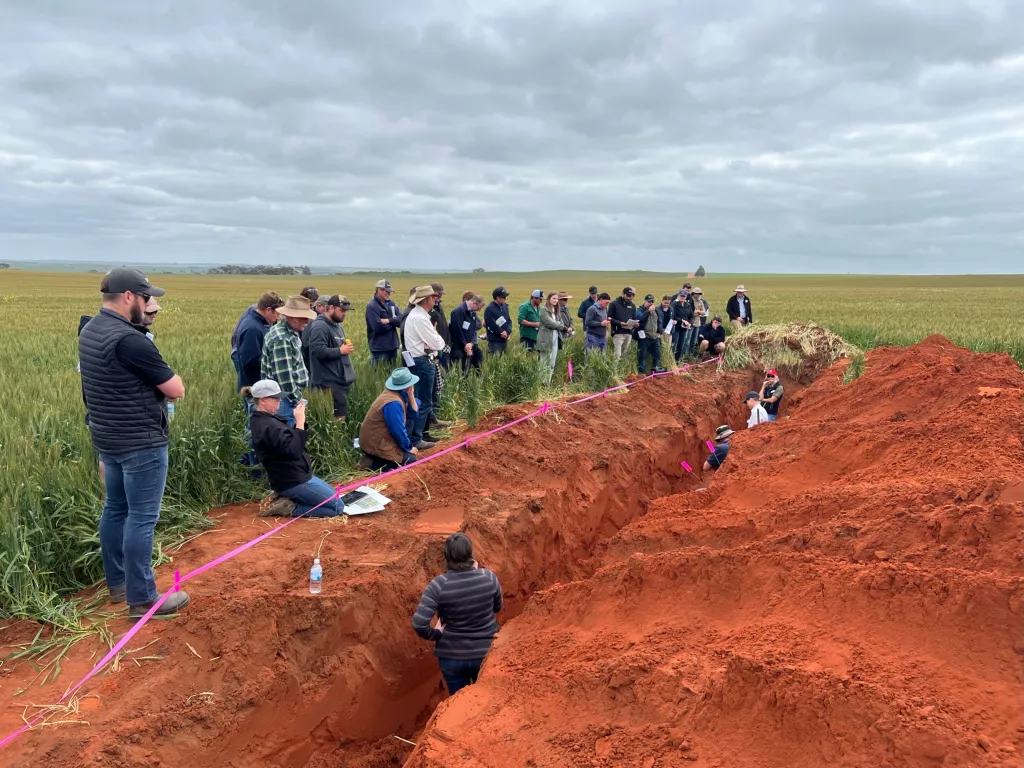Stubble Management Project - 2023 Seasonal Update
By Melanie Dixon, WMG Mixed Faming Systems Officer
Key Messages
- No clear differences between stubble management treatments for in-season biomass production and harvest yield.
- Leaving stubble standing remains the simplest management option, in seasonally permitting conditions.
Background
Farmers across the Wheatbelt region of Western Australia require alternate strategies to manage the increased on-farm variability that accompanies a variable climate with reduced rainfall. In years where crop production is high, there is more crop stubble that forms a protective mulch layer over the soil, reducing soil water loss, wind erosion and contributes to maintaining soil carbon and nutrient levels. However, during dry years, particularly in canola and lupin crops, the amount of organic matter returning to the soil is severely reduced. To maintain optimal soil health outcomes, stubble management practices should be adapted to the season.
Methodology
WMG has collaborated with Corrigin Farm Improvement Group to establish six demonstration sites across the Northern and Central Wheatbelt region. The site layout is replicated at each of the demonstration sites (see Table 1).
| Treatment # | Stubble Management Treatment |
| 1 | Standing stubble |
| 2 | Machinery Manipulation |
| 3 | Applied Bio-stimulant (UAN) |
There is a single application of each treatment at the beginning of the 2023 season before a return to standard management practices for the duration of the project. This includes crop rotation, inputs, and applications rates. Plant count, weed counts, biomass and yield measurements are recorded across 2023 and 2024 to compare each of the stubble treatment effects.
Results
In – season biomass production

Across all sites, irrespective of crop species and region, there is no clear difference in average biomass (kg/ha) in stubble management treatment, as shown in Figure 1. Throughout 2023, there were no reported visual differences in crop production, which is also reflected in the data displayed in Figure 1.
A similar result is found when comparing the data via region (Central Wheatbelt and Northern Wheatbelt) and crop type respectively (Figure 2). Although there is an increased biomass production in Central Wheatbelt – Wheat, the similarities between stubble treatments remain.

Figure 3 shows the individual site in-season biomass production, accounting for rainfall and soil type variability. Northern Wheatbelt demonstration sites are 1 – 3 (top row) and Central Wheatbelt demonstration sites are 4 – 6 (bottom row). There is clear variability between sites, particularly where Site 4 exhibits increased biomass production. As with Figure 1 and Figure 2, Figure 3 suggests no distinct difference between stubble management treatments for in-season biomass production.


Yield
Figure 4 displays the yield data from the Northern Wheatbelt sites only. There are no clear differences in canola yield across the stubble management treatments. This aligns with Figures 1 – 3, where in-season biomass production remained consistent regardless of stubble management treatments. There are minor differences between yields at Site 2 – Wheat, where the machinery manipulation treatments yielded the highest. This result supported the host farmers prediction, where he had previously experienced increased yields in the season immediately following soil machinery manipulation. Visual differences at this site were also recorded in-season.

Discussion
The results of the 2023 season have demonstrated no differences in crop production between different stubble management practices. Due to the nature of a demonstration trial rather than replication, associations between yield, in-season biomass production and stubble management treatments are not definitive.
There was an increased stubble burden across all sites after a high production 2022 season. The project was originally devised as an opportunity to investigate management of large stubble burdens in above average rainfall years, and low stubble cover in dry years. Multiple factors may have affected the efficacy of treatments in the 2023 season, including a low average rainfall across both regions. Expectations amongst treatments included applied biostimulant increasing stubble breakdown and machinery manipulation increasing stubble soil contact, although possibly increasing the occurrence of nutrient tie-up. These expectations were not met, with no differences recorded between treatments, leading to the conclusion that leaving standing stubbles remains the simplest management option. Multiple factors such as ease of seeding and increased time for biomass breakdown remain when leaving stubbles standing with no treatments, however results from the 2024 season may change this report’s initial observations.
More Information
More information about this project can be found on the Stubble Management Project page.












